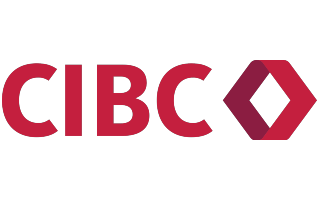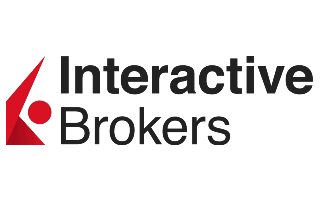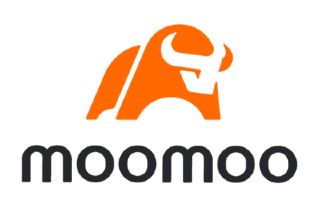The Russell 3000 is made up of 3,000 US-traded stocks, including some of the largest companies in the US like Apple, Google and Microsoft. But despite the number of stocks it tracks, its perspective is limited by the large-cap companies that steer its performance.
What is the Russell 3000?
The Russell 3000 is an equity index that tracks 3,000 of the largest US-traded stocks and is designed to help investors gauge the US stock market. It follows 1,000 of the largest companies in the US and 2,000 smaller companies. Together, these stocks represent close to 98% of all US incorporated entities and provide the basis for the Russell 1000 and the Russell 2000.
The Russell 3000 is a cap-weighted equity index, which means companies within the index are weighted by the total market value of their outstanding shares. This means that companies with the highest market cap have the biggest impact on the index’s performance.
“Market cap” is short for market capitalization. It refers to the value of a company’s unsold stocks and is calculated by multiplying the number of outstanding stocks by the current market price of a single stock.
How to invest in the Russell 3000
Because the Russell 3000 is just an index of stocks, you can’t invest in it directly. However, you can invest in individual stocks tracked by the index or buy into ETFs that track the index.
Here’s how the investment process works:
- Pick an investment platform. Browse brokerage account options across trading platforms to find the broker that best fits your investment goals.
- Open an account. Complete your account application and link an external account to fund your investments.
- Select your securities. View stocks and ETFs available for trade using your platform’s research tools and submit your order.
- Track your investments. Monitor the performance of your investments from your brokerage account.
What stocks are in the Russell 3000?
The Russell 3000 tracks some of the best-known publicly traded companies in the US, including:
- Amazon (AMZN)
- Apple (AAPL)
- Berkshire Hathaway Inc. (BRKB)
- Exxon Mobil (XOM)
- Facebook (FB)
- Google (GOOGL)
- Johnson & Johnson (JNJ)
- JPMorgan Chase (JPM)
- Microsoft (MSFT)
- Visa Inc. (V)
What ETFs track the Russell 3000?
Major exchange-traded funds (ETFs) that track the Russell 3000 include:
- Vanguard Russell 3000 Index Fund ETF Shares (NasdaqGS: VTHR)
- SPDR Portfolio S&P 1500 Composite Stock Market ETF (NasdaqArca: SPTM)
- iShares Russell 3000 ETF (NYSEArca: IWV)
While available securities vary by trading platform, most brokerages offer access to stocks and ETFs.
How is the Russell 3000 performing?
The graph below tracks how the Russell 3000 has performed historically (figures are stated in US dollars). Toggle between the options on the graph to see the data for the past month, 3 months, year or 5 years.
Why should I invest in the Russell 3000?
Investing in index funds can help bring diversification to a portfolio with limited reach. Indices can help you identify top-performing sectors and stocks while providing a snapshot of the market as a whole. ETFs especially offer a well-rounded investment opportunity as they are typically less volatile than individual stocks.
A beginner’s guide to exchange traded funds (ETFs)
What are the risks of investing in the Russell 3000?
No investment is risk-free, and this is true of all securities and indexes. The Russell 3000, while offering an overview of US market performance, is limited to US-traded stocks and is dominated by large-cap stocks. This means that despite its scope, it doesn’t capture the total stock market — in fact, most of its companies come from the financial and tech sectors.
The best way to build a diversified portfolio is to invest in stocks and funds from multiple indexes, both domestic and international.
Compare stock trading platforms
If you plan to invest in an ETF that tracks the Russell 3000, you’ll need to open a brokerage account. Compare your options to find the best fit.
Finder Score for stock trading platforms
To make comparing even easier we came up with the Finder Score. Trading costs, account fees and features across 10+ stock trading platforms and apps are all weighted and scaled to produce a score out of 10. The higher the score, the better the platform—it's that simple.
Bottom line
The Russell 3000 provides a broad view of the US market and serves as the foundation for the Russell 2000 and Russell 1000. But despite its size, its perspective is heavily skewed by the large-cap stocks it tracks.
To invest, open a brokerage account with a trading platform well-suited to your investment needs.
Frequently asked questions
More on investing

Ethereum treasury companies
We break down which companies hold Ethereum, why they’re doing it and what ETH treasuries mean for markets and investors.
Read more…
How to invest in the EURO STOXX 50
Want to invest in the Euro Stoxx 50 in Canada? Explore investment platforms and popular Euro Stoxx 50 index funds.
Read more…
What are the best stocks for beginners with little money to invest?
Want to dive into investing but don’t have much to spend? Take a look at these types of stocks.
Read more…More guides on Finder
-
Bitcoin Treasury Companies
Find out which companies hold Bitcoin, why they’re doing it, and what it means for markets, investors and balance sheets.
-
XRP Treasury Companies
These are the companies quietly adding XRP to their balance sheets.
-
Ethereum treasury companies
We break down which companies hold Ethereum, why they’re doing it and what ETH treasuries mean for markets and investors.
-
Solana Treasury Companies
Find out which companies hold Solana, why they’re doing it, and what it means for markets, investors and balance sheets.
-
Guide to buying Klarna stock in Canada
Learn how to buy KLAR stock, with historical pricing before you buy.
-
Best renewable energy stocks
These are the best renewable energy stocks to buy now in Canada.
-
Guide to buying Grail stock in Canada
Steps to owning and managing GRAL, with 24-hour and historical pricing before you buy.
-
Guide to buying Zebra Technologies Corporation stock in Canada
Steps to owning and managing Zebra Technologies Corporation, with 24-hour and historical pricing before you buy.
-
Guide to buying Gran Tierra Energy stock in Canada
Steps to owning and managing GTE stock, with 24-hour and historical pricing before you buy.
-
Guide to buying HYBE stock in Canada
Steps to owning and managing HYBE (formerly Big Hit Entertainment), with 24-hour and historical pricing before you buy.



